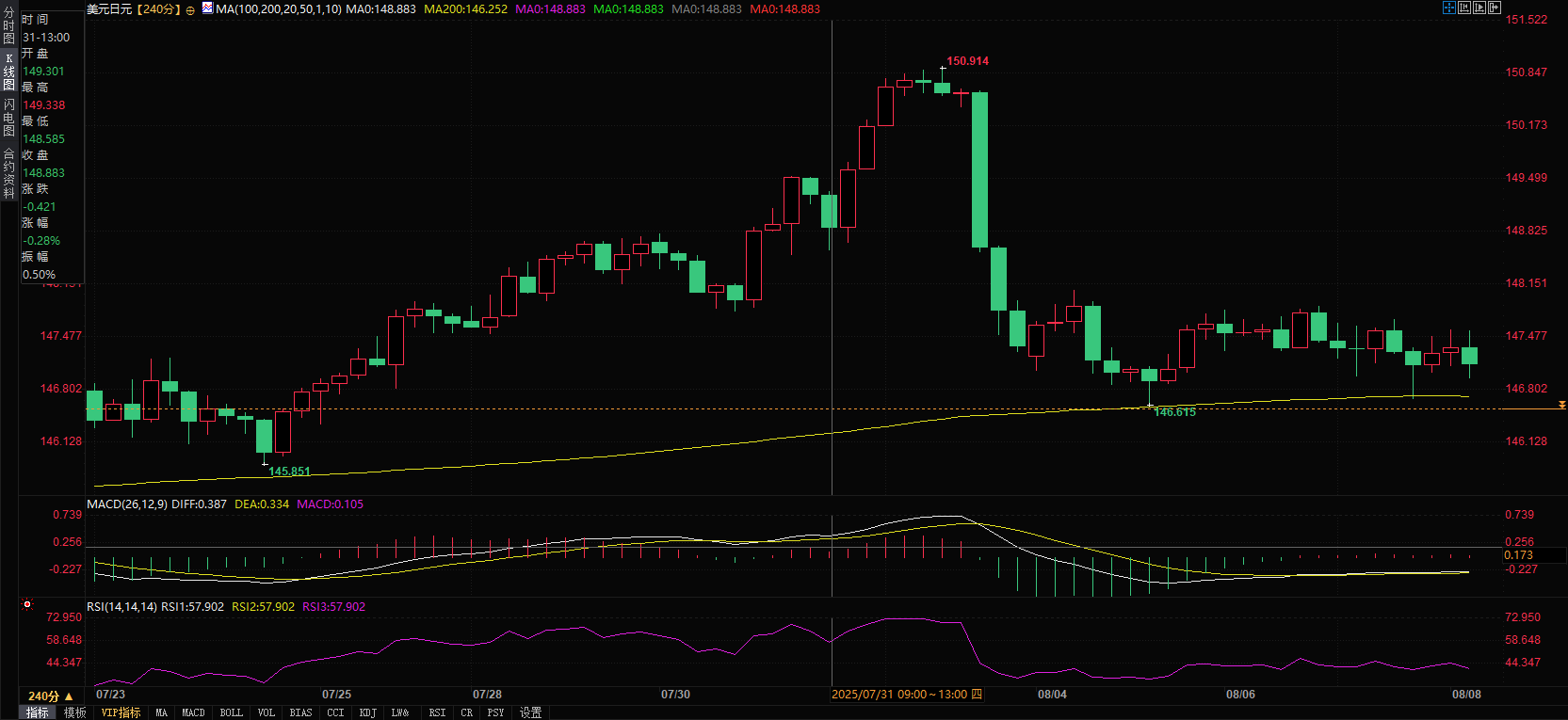Yen surge alert! Bank of Japan hawks vs. Fed doves clash at 146; PPI could surge 100 points tonight.
2025-08-14 17:02:34

Meanwhile, these supporting factors have largely offset the prevailing risk-on environment and have not diminished the strong bullish sentiment towards the safe-haven yen. However, market expectations of a delayed further Bank of Japan rate hike, given concerns about a consumption-led recovery, domestic political uncertainty, and increased US tariffs, may curb yen bullish bets on further gains. Furthermore, a slight rebound in the US dollar ahead of the US Producer Price Index (PPI) report may provide support for USD/JPY.
Yen outperforms amid Bank of Japan rate hike bets despite waning safe-haven demand
The Bank of Japan sent hawkish signals in July, indicating that it would continue to raise interest rates if economic growth and inflation met expectations, pushing the yen to strengthen for the third consecutive day on Thursday.
At the same time, the US dollar continued to hover near a two-week low as the market generally expects the Federal Reserve to cut interest rates at its September monetary policy meeting.
This expectation is confirmed by a number of recent weak macroeconomic data in the United States, among which the highly anticipated July non-farm payroll report showed signs of deteriorating labor market conditions.
Separately, U.S. consumer inflation data released on Tuesday came in broadly in line with expectations, further bolstering the view that recent tariff-related price pressures are generally temporary and making market expectations for a deeper rate cut by the Federal Reserve more aggressive than previously.
Data last week showed Japan’s real wages fell for a sixth consecutive month in June, while a slowdown in the country’s corporate goods price index (CGPI) heightened concerns about a consumption-led recovery.
Domestic political uncertainty, coupled with the potential economic impact of increased U.S. tariffs, suggests the Bank of Japan may delay its policy normalization. However, this has not effectively shaken the confidence of yen bears.
Global risk sentiment continues to be supported by three factors: expectations of further interest rate cuts by the Federal Reserve, a three-month extension of the US-China tariff truce, and optimism that the US-Russia summit could end the Russia-Ukraine conflict.
Rising risk appetite pushed the Nikkei 225 index above 43,000 points for the first time ever on Wednesday. Meanwhile, the benchmark S&P 500 index and the tech-heavy Nasdaq Composite index hit record highs for the second consecutive trading day.
Traders are closely watching the upcoming PPI release - this data, along with speeches by key Federal Reserve Open Market Committee officials, will dominate demand for the dollar and could provide trading momentum for USD/JPY later on Thursday.
Market focus will then turn to Friday's release of Japan's preliminary second-quarter GDP data and the University of Michigan's consumer confidence index. However, from a fundamental perspective, the current environment seems more favorable for yen bulls.
USD/JPY may fall further below the 146.00 mark

From a technical perspective, USD/JPY has effectively broken below its 200-period moving average on the 4-hour chart, potentially triggering a renewed sell-off. However, the Relative Strength Index (RSI) is approaching oversold territory during this period, suggesting a wait for intraday consolidation or a technical rebound before entering a short position. However, any rebound attempt is likely to encounter renewed selling pressure, with upside potential limited by the 147.00 support-turned-resistance level. This level has become a key pivot point; a clear break above it could trigger short-covering, pushing the pair to test the 147.45-147.50 area.
At 17:00 Beijing time, the US dollar was trading at 146.512/13 against the Japanese yen.
- Risk Warning and Disclaimer
- The market involves risk, and trading may not be suitable for all investors. This article is for reference only and does not constitute personal investment advice, nor does it take into account certain users’ specific investment objectives, financial situation, or other needs. Any investment decisions made based on this information are at your own risk.





















